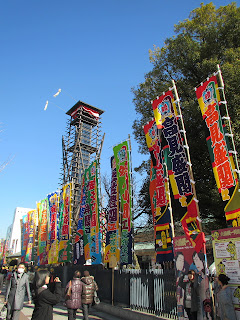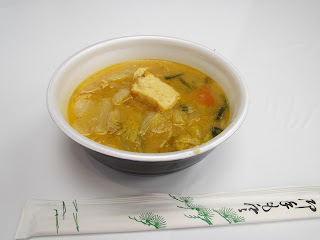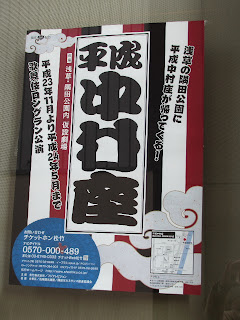広重は川の西岸から上流のほうを見ています。
This is the Ryogoku-bridge over the Sumida river.
Hiroshige is standing at the west bank of the river and looking upstream .
両国橋は明暦の大火の後1661年に架けられました。
The Ryogoku-bridge was built in 1661, after the Great Meireki Fire.
徳川幕府は防備上の理由から隅田川にあまり橋を架けていませんでした。しかしそのために、明暦の大火の際、逃げ場を失った10万人もの人が命を失いました。そこで、この両国橋が架けられたのだそうです。
Tokugawa Shogunate's policy was, to defend the city of Edo from invasion, not to build many bridges over the Sumida river. Because of that, in the Great Meireki Fire, people had no way out of the city, and more than100 thousand lives were lost. And so the Ryogoku bridge was built.
両国橋の西側は大川端と呼ばれ、江戸有数の盛り場となりました。小さな茶店が並んでいますね。その他見世物小屋あり、大道芸あり、それはそれはにぎやかだったそうですよ。
The west side of the bridge was called Okawabata and it became a popular spot for Edo people. People could eat and drink at small stalls, and watch shows and other performances. It was such a crowded area.
江戸東京博物館に30分の1の模型がありました。広重の絵と同じ感じに写真を撮ってみました。どうでしょう?
At Edo-Tokyo museum, they have 1/30 model of this area.
I tried to take a picture just like Hiroshige's. Well, how's that?
さて、現在の両国橋です。
This is the Ryogoku bridge today.
水上バスがやってきました。いいお天気で気持ち良さそうです。
Here comes a water-bus!
It must feel great in such a fine weather.
It must feel great in such a fine weather.
橋の下をくぐり抜けていきます。
隅田川にはたくさんの橋がかかっているので、船に乗って橋を見ていくのも楽しいでしょうね。
It's going under the bridge. As there are many bridges over the Sumida river, it would be fun to ride a boat and see all those bridges.
さて広重の描いたあたりは今どんな風に見えるんでしょう?
Well, how does the place look like now?
今は静かでのんびりの眺めでした。
It was much quieter than the old days.
I felt a little sleepy.
I felt a little sleepy.













































